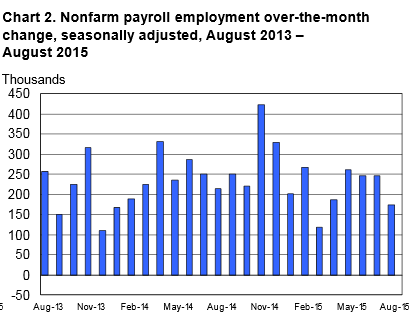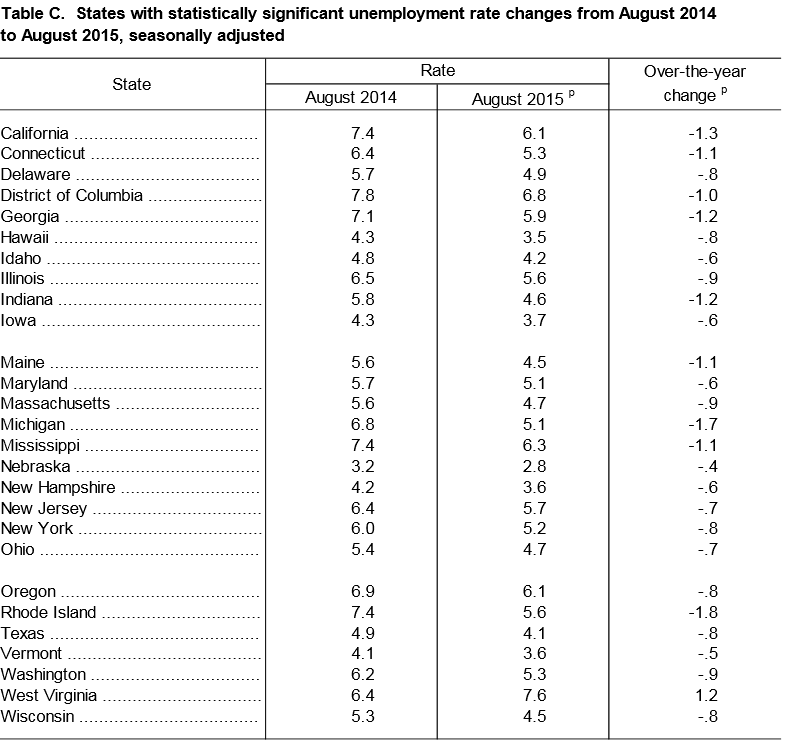Employment Blog September 2015
This Employment report is provided by the Bureau of Labor Statistics, U S Department of Labor. Nonfarm payroll employment increased by 173,000 in August, and the unemployment rate edged down to 5.1 percent. Employment rose in health care and social assistance and in financial activities, while manufacturing and mining employment declined. Incorporating revisions for June and July, which increased nonfarm payroll employment by 44,000, monthly job gains have averaged 221,000 over the past 3 months. In the 12 months prior to August, employment growth averaged 247,000 per month. The numbers are summarized in Charts 1 and 2.
Health care and social assistance employment rose by 56,000 over the month. Health care accounted for 41,000 of the gain, with ambulatory health care services and hospitals adding 21,000 and 16,000 jobs, respectively. Employment in social assistance, which includes child day care services and services for the elderly and disabled, was up by 16,000. Over the year, employment has risen by 457,000 in health care and by 107,000 in social assistance.
Employment in financial activities rose by 19,000 in August and has expanded by 170,000 over the past 12 months. Within the industry, job gains occurred in real estate (+8,000) and in securities, commodity contracts, and investments (+5,000) in August.
Employment continued to trend up in professional and business services (+33,000) and in food services and drinking places (+26,000) over the month.
Manufacturing employment declined by 17,000 over the month, after changing little in July (+12,000). Thus far this year, manufacturing employment has shown little net change. In August, job losses in fabricated metal products (-7,000), food manufacturing (-7,000), and several other industries more than offset gains in motor vehicles and parts (+6,000) and miscellaneous durable goods manufacturing (+4,000).
Mining employment fell by 9,000 in August. Since its recent peak in December 2014, mining employment has declined by 90,000; job losses in support activities for mining accounted for 80 percent of the decline over this period.
Average hourly earnings of all employees on private nonfarm payrolls rose by 8 cents in August to $25.09, following a 6-cent increase in July. Over the past 12 months, average hourly earnings have risen by 2.2 percent. From July 2014 to July 2015, the Consumer Price Index for all Urban Consumers (CPI-U) increased by 0.2 percentage point (on a seasonally adjusted basis).
Turning now to data from the survey of households, both the unemployment rate (5.1 percent) and the number of unemployed (8.0 million) edged down in August. Among the unemployed, 27.7 percent, or 2.2 million, had been unemployed 27 weeks or more, essentially unchanged from the prior month.
Regional variations are detailed in Table C. This provides changes in unemployment rates for states that had statistically significant changes from August 2014 to August 2015.



